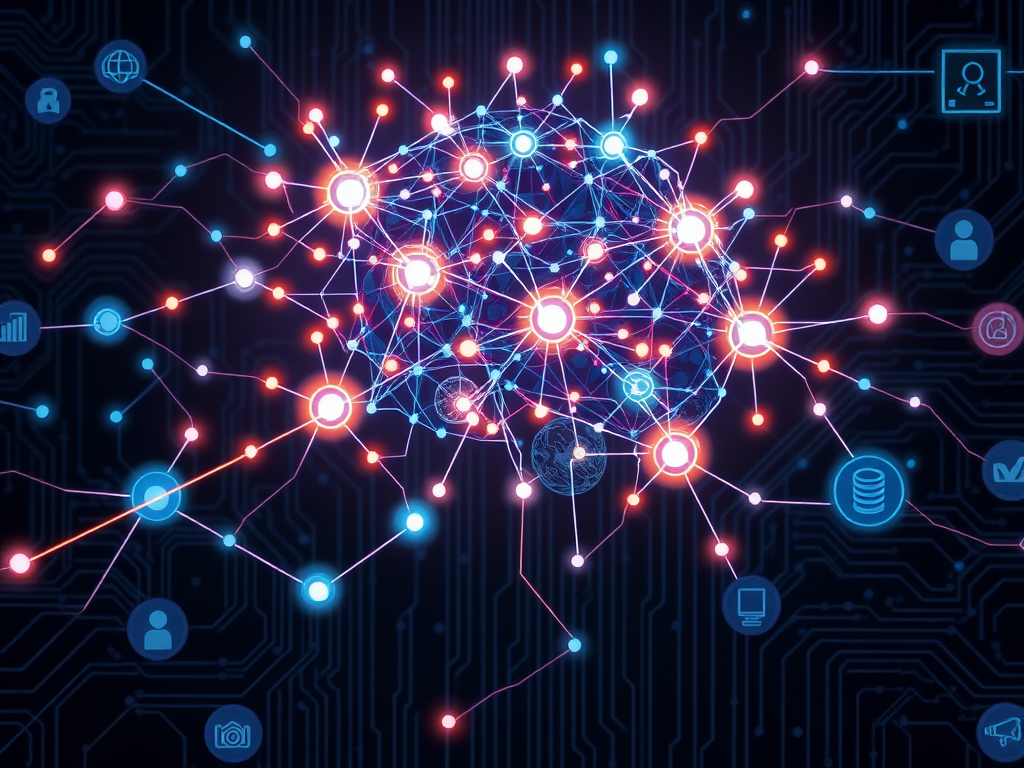
Introduction
Deep learning is a fascinating part of artificial intelligence (AI) that is changing how computers learn and make decisions. By imitating the way our brains work, deep learning enables machines to process large amounts of data, identify patterns, and perform tasks with little human intervention. This article will dive deeper into what deep learning is, how it functions, its various applications, and why it is so significant in today’s world.
What is Deep Learning?
Deep learning is a technique within machine learning, which itself is a branch of AI. While traditional machine learning often requires humans to identify important features in data, deep learning automates this process. It uses complex structures called neural networks to learn directly from raw data.
Key Concepts
- Neural Networks: These are the backbone of deep learning. A neural network is made up of layers of interconnected units called neurons. Each neuron processes information and passes it to the next layer, similar to how neurons in the human brain communicate.
- Layers: Neural networks consist of three main types of layers:
- Input Layer: This is where the data enters the network. For example, if the data is an image, each pixel would be an input.
- Hidden Layers: These layers do the heavy lifting. They process input data and extract useful features. A deep network can have many hidden layers, allowing it to learn increasingly complex patterns.
- Output Layer: This layer produces the final result, such as a classification (e.g., identifying an image as a cat or a dog) or a prediction (e.g., forecasting sales).
- Activation Functions: These mathematical functions determine if a neuron should be activated or not. They introduce non-linearity into the model, making it capable of learning complex relationships in the data.
- Backpropagation: This is a training method where the network adjusts its weights based on the errors it makes. When the model makes a prediction, it checks how far off it was from the actual result and tweaks its parameters to improve future predictions.
How Deep Learning Works
The process of deep learning can be broken down into several clear steps:
- Data Collection: Large amounts of data are gathered. This data can be images, text, audio, or any other form of information. The more data available, the better the model can learn.
- Preprocessing: Before training, data often needs to be cleaned and transformed. This might include normalizing values, removing duplicates, or converting text into numerical formats.
- Model Creation: A neural network architecture is designed. This involves deciding how many layers it will have and how many neurons will be in each layer. The architecture can vary greatly depending on the task.
- Training: The model is trained on the prepared dataset. During this phase, it learns to minimize the difference between its predictions and the actual outcomes. This process involves many iterations, where the model continuously adjusts its parameters.
- Evaluation: After training, the model is tested on a separate validation dataset to assess its performance. Metrics like accuracy, precision, and recall are often used to evaluate how well the model is performing.
- Deployment: Once the model is trained and evaluated, it can be deployed in real-world applications. This could mean integrating it into software, using it in devices, or making it available via cloud services.
Applications of Deep Learning
Deep learning has a wide range of applications across various fields:
1. Computer Vision
Deep learning has greatly advanced computer vision, enabling machines to interpret and understand visual information. Applications include:
- Facial Recognition: Used in security systems and social media platforms.
- Object Detection: Helps in identifying objects in images and videos, useful in autonomous vehicles and surveillance.
2. Natural Language Processing
Deep learning plays a crucial role in understanding and generating human language. Applications include:
- Chatbots: Provide customer service and support through natural conversation.
- Language Translation: Services like Google Translate use deep learning to translate text between languages accurately.
3. Healthcare
In healthcare, deep learning assists in diagnosing diseases and improving patient care:
- Medical Imaging: Analyzes X-rays, MRIs, and CT scans to identify conditions like tumors and fractures.
- Predictive Analytics: Forecasts patient outcomes based on historical data, aiding in personalized treatment plans.
4. Autonomous Vehicles
Deep learning is vital for the development of self-driving cars:
- Sensor Data Processing: Analyzes data from cameras and LIDAR to understand surroundings and make driving decisions.
- Path Planning: Helps in navigating complex environments safely.

5. Finance
In finance, deep learning algorithms are used to:
- Fraud Detection: Identify unusual patterns in transactions to prevent fraud.
- Algorithmic Trading: Automate stock trading by predicting market trends.
Why Deep Learning Matters
- Higher Accuracy: Deep learning models often achieve better accuracy than traditional methods, especially in complex tasks involving unstructured data.
- Automation: By automating intricate processes, deep learning can save time and reduce costs in industries like manufacturing, customer service, and healthcare.
- Scalability: These models can handle huge datasets efficiently, making them suitable for big data applications. The ability to scale is crucial as the amount of data in the world continues to grow.
- Innovation: Deep learning is at the forefront of technological advancements, leading to new products and services that improve our daily lives. It fosters innovation in areas like robotics, gaming, and virtual reality.
- Accessibility: As deep learning tools become more accessible, businesses of all sizes can harness AI to enhance their operations, making advanced technology available to a broader audience.
Conclusion
Deep learning is a powerful and transformative technology that is reshaping how we interact with machines and the world around us. Its ability to learn from data, recognize patterns, and make intelligent decisions has far-reaching implications across various industries. As research continues and technology evolves, deep learning will play an increasingly important role in solving complex problems and enhancing human capabilities. Understanding deep learning is essential for anyone looking to engage with the future of technology and its impact on society.
#Deep Learning #innovation #Technology #Artificial Intelligence #AI




